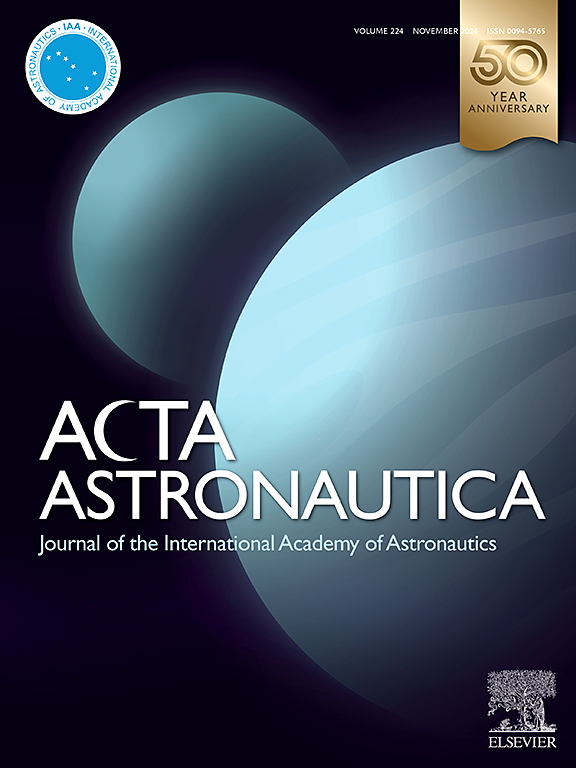Guidance strategies to deploy a Lunar Navigation Constellation from Gateway
IF 3.1
2区 物理与天体物理
Q1 ENGINEERING, AEROSPACE
引用次数: 0
Abstract
In recent years, lunar constellation design and deployment has attracted a strong interest from the scientific community and the major space agencies. Indeed, a similar space infrastructure will represent a valuable asset for navigation and telecommunications purposes, useful to many robotic and human activities on the lunar surface. This study focuses on the analysis, design, and testing of three different feedback guidance strategies for the deployment of a lunar constellation, starting from Gateway. Orbit dynamics is modeled in a high-fidelity framework that employs planetary ephemeris and includes all the relevant orbit perturbations, i.e. the gravitational attraction due to Earth and Sun and several harmonics of the selenopotential. A constellation composed of 6 satellites is considered. They travel two distinct frozen lunar elliptical orbits, with proper mutual phasing. The first deployment strategy assumes that each satellite uses high-thrust propulsion to enter its operational orbit, with correct phasing. To do this, a single-parameter iterative Lambert-based algorithm is proposed as an effective real-time guidance technique, capable of determining all the (modest) intermediate correction maneuvers, to drive each satellite toward the desired position. The second deployment strategy assumes again the use of high thrust, while including two distinct phases: (a) orbit acquisition and (b) phasing. Specifically, in phase (a) three satellites are arranged as a cluster and travel toward their orbit, leveraging an original two-parameter iterative Lambert-based guidance. In phase (b), each vehicle performs phasing maneuvers, to get its correct position. The third deployment strategy includes again two phases: (a) low-thrust orbit acquisition and (b) phasing. In phase (a), the satellites are clustered and embarked onboard two cargo spacecraft, equipped with a low-thrust propulsion system. Nonlinear orbit control allows identifying a saturated feedback law for the low thrust magnitude and direction, and is shown to be effective as a guidance technique for each cargo vehicle. The closed-loop dynamical system at hand is proven to enjoy quasi-global stability properties, leveraging the Lyapunov stability theory. In phase (b), each satellite performs again phasing maneuvers, as in the preceding strategy. The three deployment strategies are evaluated in both nominal and nonnominal flight conditions, with the intent of showing their effectiveness while comparing their performance, in terms of propellant consumption and overall deployment duration.
求助全文
约1分钟内获得全文
求助全文
来源期刊

Acta Astronautica
工程技术-工程:宇航
CiteScore
7.20
自引率
22.90%
发文量
599
审稿时长
53 days
期刊介绍:
Acta Astronautica is sponsored by the International Academy of Astronautics. Content is based on original contributions in all fields of basic, engineering, life and social space sciences and of space technology related to:
The peaceful scientific exploration of space,
Its exploitation for human welfare and progress,
Conception, design, development and operation of space-borne and Earth-based systems,
In addition to regular issues, the journal publishes selected proceedings of the annual International Astronautical Congress (IAC), transactions of the IAA and special issues on topics of current interest, such as microgravity, space station technology, geostationary orbits, and space economics. Other subject areas include satellite technology, space transportation and communications, space energy, power and propulsion, astrodynamics, extraterrestrial intelligence and Earth observations.
 求助内容:
求助内容: 应助结果提醒方式:
应助结果提醒方式:


